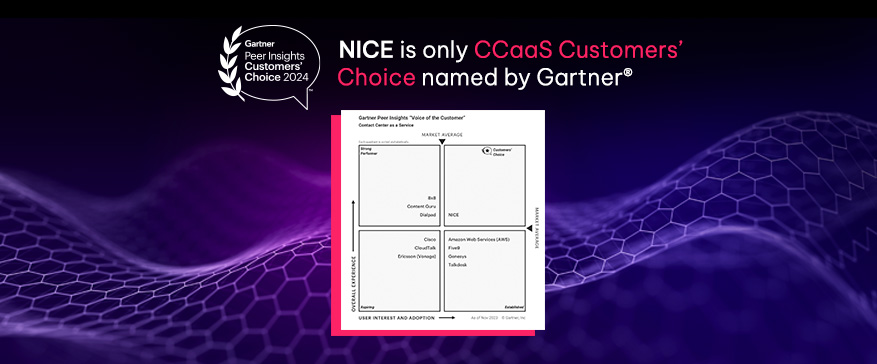AI, Automation, and Analytics: Prescription for Healthcare Success
- What is Customer Service Automation?
- Key Industry Statistics
- Key Examples of Customer Service Automation Tools
- Benefits Highlighted by Automation Examples
- Implementing Customer Service Automation
- Challenges and Solutions in Customer Service Automation
- Future Trends in Customer Service Automation
- Conclusion
- FAQs
What is Customer Service Automation?
Customer service automation is the use of technology to streamline and automate routine customer service tasks, allowing human agents to focus on more complex and high-value interactions. This approach leverages software and tools to manage customer interactions, provide support, and resolve issues efficiently. By automating repetitive tasks, businesses can enhance operational efficiency, reduce response times, and improve overall customer satisfaction. Service automation encompasses various technologies, including AI-powered chatbots, automated ticketing systems, and self-service portals, all designed to handle customer service tasks seamlessly.Key Industry Statistics
Key Examples of Customer Service Automation Tools
1. AI-Powered ChatbotsAI-powered chatbots are intelligent virtual assistants designed to automate customer support, enhancing efficiency by handling customer inquiries instantly, providing 24/7 availability, and reducing repetitive tasks and response times.Example 1: E-commerce Customer Support An online retailer uses a chatbot integrated with its inventory and shipping systems to handle order tracking, shipping inquiries, and returns. The chatbot provides real-time updates, reducing support ticket volume by 30-40% and enabling agents to focus on complex issues.Example 2: Financial Services Chatbot A bank implements a chatbot to manage account balance inquiries, credit card applications, and fraud alerts. The chatbot processes requests securely, reducing call center workloads by 50% and ensuring faster customer resolutions.Key Benefits Resolves up to 80% of routine inquiries without human intervention. Operates across multiple platforms (web, mobile, and social media). Supports multilingual capabilities for global audiences.2. Automated Ticketing SystemsAutomated customer service software ensures customer queries are logged, categorized, and routed to the right team for prompt resolution, enhancing efficiency and reducing operational costs.Example 1: Helpdesk Ticket ManagementA software company utilizes automated ticketing to sort and assign issues based on keywords and urgency. Technical support tickets go to IT, while billing queries are sent to the finance team. This reduces resolution times by 25-35% and ensures tickets are prioritized effectively.Example 2: Healthcare Appointment ManagementA hospital uses an automated ticketing system to handle patient inquiries, such as cancellations or rescheduling. Urgent cases are flagged and routed to staff immediately, while routine requests are managed through self-service, reducing delays and improving efficiency.Key Benefits Categorizes tickets in seconds, reducing agent workload. Ensures SLA (Service Level Agreement) compliance with automated prioritization. Improves overall resolution times.3. Interactive Voice Response (IVR) SystemsIVR systems, as a form of an automated support system, allow customers to navigate support options through voice commands or keypad inputs, automating phone-based customer service.Example 1: Airline IVR SystemAn airline employs an IVR system to assist with flight bookings, cancellations, and updates. AI-driven voice recognition enhances the system’s accuracy, reducing agent workload by 40% and improving first-call resolution rates.Example 2: Utility Company Payment AssistanceA utility provider uses an IVR system to enable bill payments, account inquiries, and outage reports. This system resolves 60% of customer queries without requiring agent intervention, saving time and costs.Key Benefits Enhances first-call resolution with personalized routing. Reduces call handling costs by 20-40%. Provides efficient, scalable solutions for high call volumes.4. Self-Service PortalsSelf-service portals, as part of automated customer service solutions, empower customers to find solutions independently, reducing dependency on live agents and improving efficiency in customer support.Example 1: SaaS Knowledge BaseA SaaS company offers an AI-enhanced knowledge base with troubleshooting guides, FAQs, and tutorials. Customers quickly find answers, decreasing ticket submissions by 30% and improving satisfaction.Example 2: Telecom Self-Service PortalA telecom provider allows customers to manage accounts, update contact details, and troubleshoot connectivity issues via its self-service portal. This reduces inbound calls by 25%, streamlining operations and boosting customer confidence.Key Benefits Available 24/7, improving accessibility and convenience. Reduces ticket volume by addressing common issues upfront. Builds customer self-reliance and satisfaction.5. Proactive Support ToolsAutomating customer service through proactive support tools addresses potential customer issues before they arise, improving satisfaction and reducing the need for inbound inquiries.Example 1: Delivery NotificationsA logistics company sends automated SMS and email updates about shipment statuses. This proactive communication reduces inquiries related to tracking by 20% and builds customer trust.Example 2: Software Update AlertsA tech company notifies customers about upcoming software updates or system maintenance, ensuring users are prepared and minimizing disruptions. This approach reduces support queries during downtime and enhances customer readiness.Key Benefits Anticipates and resolves issues before they escalate. Reduces customer frustration and improves loyalty. Builds trust through transparent communication.6. Customer Feedback AutomationAutomating the collection and analysis of customer feedback, highlighting the benefit of automated customer service, helps businesses generate automated reporting and analytics, gain valuable insights, and improve services.Example 1: Post-Interaction SurveysA contact center sends automated surveys after customer calls. AI analyzes feedback to detect trends and highlight areas for improvement. Companies using these tools report a 15% increase in survey response rates.Example 2: Retail Sentiment AnalysisA retailer collects feedback via chatbots and employs sentiment analysis to identify dissatisfaction. Negative feedback is flagged for immediate follow-up, improving customer retention.Key Benefits Provides actionable insights into customer preferences. Identifies trends for continuous service improvements. Enhances customer loyalty through timely responses.7. Omnichannel Support AutomationOmnichannel automation, as part of a comprehensive customer service strategy, ensures seamless service across all communication channels.Example 1: Social Media ResponsesA fashion brand automates responses to FAQs on platforms like Instagram and Facebook. Questions about shipping, returns, and sizing are addressed instantly, allowing human agents to handle escalations.Example 2: Messaging App IntegrationA bank integrates its customer service automation with WhatsApp, enabling customers to check balances, report fraud, and request account details directly through the app. This reduces email and phone inquiries, improving efficiency.Key Benefits Ensures consistent service quality across all channels. Reduces customer effort with streamlined processes. Enhances brand reputation through fast, reliable responses.Benefits Highlighted by Automation Examples
Cost Savings Automation tools cut operational expenses by up to 30% by reducing manual effort and optimizing workflows. Additionally, the customer support automation benefit of managing high volumes of inquiries efficiently allows support teams to save time and reduce operating costs by handling multiple requests simultaneously.Faster Response Times Automated systems provide instant answers to customer inquiries or route them efficiently, reducing response times by up to 70%.Scalability During Peak Times Automated tools can handle increased demand during busy seasons or promotional events without requiring additional staffing costs.Improved Customer Satisfaction Proactive communication, faster resolutions, and personalized support enhance customer experiences, boosting loyalty and CSAT scores.Enhanced Employee Productivity Automation frees up employees to focus on more complex issues, improving morale and efficiency. An automation tool minimizes manual tasks and improves performance metrics, enabling customer service agents to concentrate on more complex issues while automating repetitive tasks like logging calls and providing answers to common inquiries.Implementing Customer Service Automation
Implementing customer service automation requires careful planning, execution, and ongoing monitoring to ensure its effectiveness. Here are some key steps to consider:Identifying Automation OpportunitiesThe first step in implementing customer service automation is to identify areas where automation can add significant value. This involves analyzing customer interactions to pinpoint repetitive tasks that can be automated. Common areas for automation include:- Answering frequently asked questions (FAQs)
- Providing basic product information
- Routing customer inquiries to the appropriate agent or department
- Sending automated responses to common customer queries
- Implementing chatbots or virtual assistants to handle customer inquiries
- Setting up automated email responses to common customer queries
- Creating a knowledge base or FAQ section to provide customers with self-service options
- Integrating automation tools with existing customer service software and systems
- Training agents on how to use automation tools and software
- Providing agents with guidance on when to escalate issues to human agents
- Encouraging agents to provide feedback on automation tools and suggest areas for improvement










